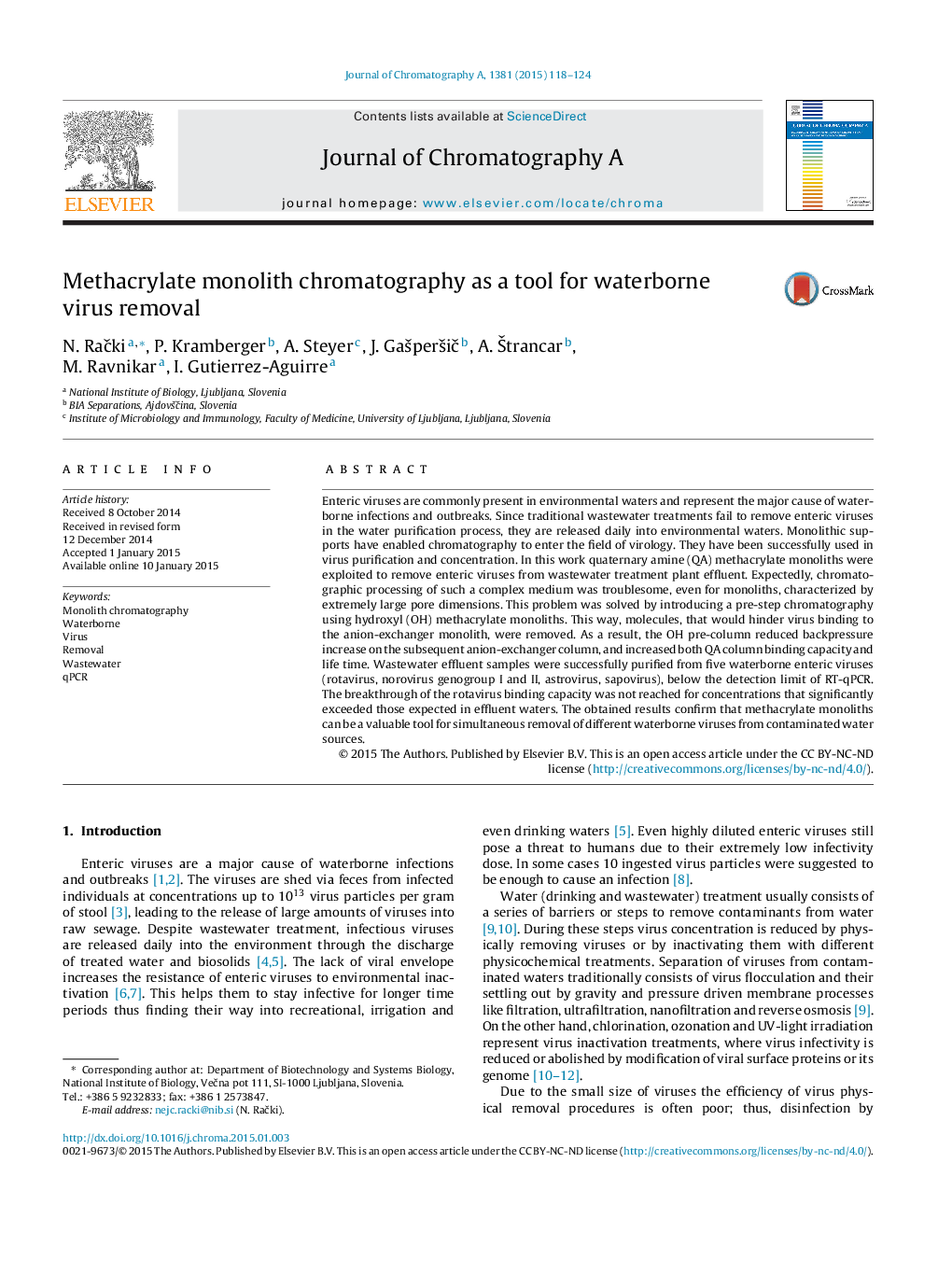| Article ID | Journal | Published Year | Pages | File Type |
|---|---|---|---|---|
| 7612038 | Journal of Chromatography A | 2015 | 7 Pages |
Abstract
Enteric viruses are commonly present in environmental waters and represent the major cause of waterborne infections and outbreaks. Since traditional wastewater treatments fail to remove enteric viruses in the water purification process, they are released daily into environmental waters. Monolithic supports have enabled chromatography to enter the field of virology. They have been successfully used in virus purification and concentration. In this work quaternary amine (QA) methacrylate monoliths were exploited to remove enteric viruses from wastewater treatment plant effluent. Expectedly, chromatographic processing of such a complex medium was troublesome, even for monoliths, characterized by extremely large pore dimensions. This problem was solved by introducing a pre-step chromatography using hydroxyl (OH) methacrylate monoliths. This way, molecules, that would hinder virus binding to the anion-exchanger monolith, were removed. As a result, the OH pre-column reduced backpressure increase on the subsequent anion-exchanger column, and increased both QA column binding capacity and life time. Wastewater effluent samples were successfully purified from five waterborne enteric viruses (rotavirus, norovirus genogroup I and II, astrovirus, sapovirus), below the detection limit of RT-qPCR. The breakthrough of the rotavirus binding capacity was not reached for concentrations that significantly exceeded those expected in effluent waters. The obtained results confirm that methacrylate monoliths can be a valuable tool for simultaneous removal of different waterborne viruses from contaminated water sources.
Related Topics
Physical Sciences and Engineering
Chemistry
Analytical Chemistry
Authors
N. RaÄki, P. Kramberger, A. Steyer, J. GaÅ¡perÅ¡iÄ, A. Å trancar, M. Ravnikar, I. Gutierrez-Aguirre,
